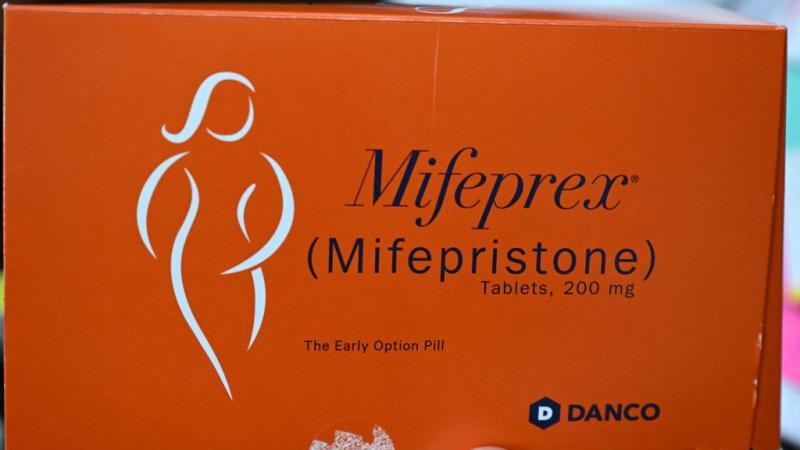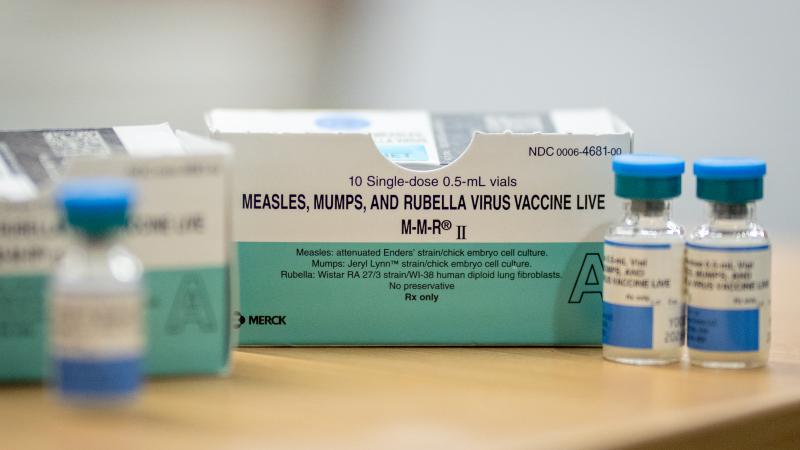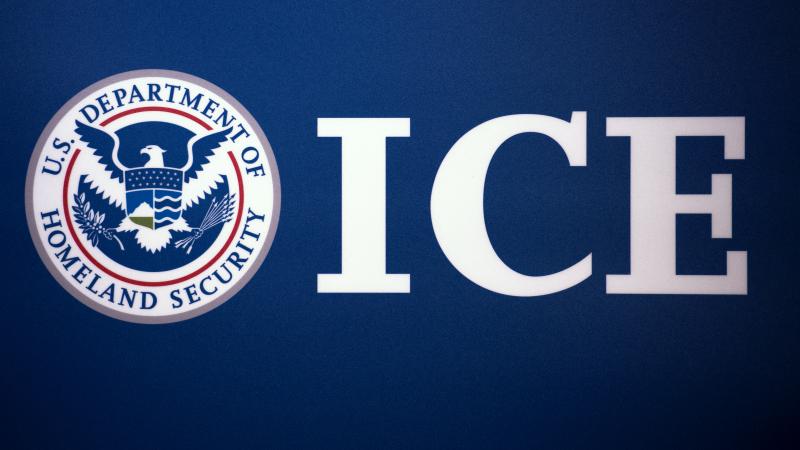'Persons with childbearing potential': American, European medical groups erase women in new guidance
"The inclusion of gender complicates clinical practice both for healthcare professionals and patients," says new European document on women, irregular heart rhythm and stroke. Journal of the American Medical Association cites "The Radical Copyeditor" as an authority.
Doctors already struggling to consistently use their patients' preferred gender pronouns and account for sex-based differences in treatment for those who present as the opposite sex are facing potentially greater confusion courtesy of American and European medical groups.
The American Medical Association's Manual of Style Committee is accepting feedback through month's end on draft guidance on "reporting gender, sex, gender identity, sexual orientation and age" in medical and scientific publication, following its similar guidance for "inclusive language" on race and ethnicity three years ago.
The draft guidance includes definitions for 12 variations of "gender" alone, starting with gender itself, which runs 15 sentences and about half a page. (Each page features the header "DO NOT CITE. DO NOT DISTRIBUTE" despite the Journal of the American Medical Association seeking public comment.)
The European Society of Cardiology erased women as a group at elevated risk for strokes in its finalized guidelines for management of atrial fibrillation, an irregular heart rhythm, developed with the European Association for Cardio-Thoracic Surgery and released at the recently concluded ESC Congress in London.
"Female sex is an age-dependent stroke risk modifier rather than a risk factor per se," the guidelines state. The next two sentences: "The inclusion of gender complicates clinical practice both for healthcare professionals and patients. It also omits individuals who identify as non-binary, transgender, or are undergoing sex hormone therapy."
The AMA draft, published in JAMA three days before the ESC guidelines appeared in its European Heart Journal, has drawn more U.S. attention.
Medical advocacy group Do No Harm asked supporters to file comments that oppose "codifying the most extreme manifestations of gender ideology," noting its summer poll that found 93 percent of black adults prefer "mother" to "birthing person" – the latter advocated in the draft.
"Despite being a scientific organization, the AMA is promoting ideology over biological reality," Do No Harm said, by discouraging the terms "born, biological or biologically, or genetic or genetically" to describe sex at birth because they can be "inaccurate and have negative implications." (The guidelines make an exception for "reports of prenatal genetic testing.")
AMA media relations coordinator Robert Mills stressed to Just the News that its "staff and leaders are not involved in the project" and that JAMA is "editorially independent" from the AMA itself.
The draft guidelines explicitly credit themselves to "the committee of the AMA Manual of Style," however.
"This draft guidance is from the JAMA Network editors, which is editorially independent from the AMA," Jen Zeis, director of JAMA Network communications and engagement, wrote in an email. "As said in the editorial, the guidance is available for public review and comment and the rationale for the guidance is included in it."
Zeis did not answer two requests to explain the presence of the header "DO NOT CITE. DO NOT DISTRIBUTE."
Swiss interventional cardiologist Catherine Gebhard, who runs a lab on sex- and gender-specific medicine at the University Hospital Inselspital Bern's Women's Heart Center, sounded the alarm on LinkedIn shortly after the ESC guidelines came out. (She used X for the first time in nearly a year to promote the LinkedIn post.)
"I am #speechless," Gebhard wrote in a post with more than 400 reactions and more than 60 comments and reposts each. "There are almost 4 billion #women on this planet—are we really saying it is too complicated to address their medical needs?"
She suggested her LinkedIn followers reach out "to members of the writing committee to understand their rationale for omitting female sex from the risk score" and write a letter to the editor "to highlight why this omission is problematic, along with arguments for its inclusion."
The ESC corresponding authors didn't respond to Just the News queries.
Gender is a "social construct, separate from gender identity" and sex, "that typically ascribes qualities of masculinity and femininity to people," which "can also be gender neutral," according to the JAMA draft guidance.
Much of that definition cites the World Health Organization, American Psychological Association, University of California Berkeley's Centers for Educational Justice & Community Engagement and GLAAD, formerly the Gay and Lesbian Alliance Against Defamation. The latter two said "gender characteristics can change over time and differ between cultures."
The draft also tells report authors and contributors to use "nongendered" terms for pregnancy and parenting – such as "people" and "parent" instead of "pregnant woman," "mother" and "father" – unless "an individual’s gender identity is known or when discussing a study that involves only cisgender women or men," meaning those who identify with their sex.
It goes so far as to replace "women" with "persons with childbearing potential" even while discouraging "overly clinical descriptions" that have previously drawn mockery, such as "people with uteruses." The term "birthing parent" can be used "for clarity in contexts where simply using 'parent' could be confusing or too vague," the guidelines say.
"Maternal" is appropriate when referring to "a person during pregnancy, childbirth, and parenting" and especially "as a population descriptor, such as in maternal morbidity and mortality," but authors generally should "use judgment and context to determine whether general or specific terms are more suitable for the material being discussed."
Do No Harm, which previously challenged new antiracism curriculum standards in medical education cosponsored by the AMA, pointed to one of the draft's cited authorities, "The Radical Copyeditor’s Style Guide for Writing About Transgender People," created by language consultant and Unitarian Universalist lay minister Alex Kapitan.
The draft warns against saying a person "identifies as" a specific gender or gender identity, rather than using "the verbs 'is' or 'are' (or 'was' or 'were')," because the former "implies a choice or something that is nonstandard or not normal." (Not explained: how a person involuntarily loses a gender identity.)
The draft also cites The Radical Copyeditor to warn against using the term "minority," at least as a noun, to describe an LGBTQ group because it "can be confusing, inaccurate, pejorative, or unacceptable" and "does not always indicate numerical proportion among subg[r]oups."
Kapitan says there's no "single best term for everyone who isn’t cisgender," which means identifying with one's sex. Even "trans" is too limiting, because "the more we work to extricate ourselves from those [patriarchal, heterosexist, racist, classist, ableist gender] norms, the more ways we will find to describe the infinite galaxies of possibility."
Female sex is not a minor consideration in the risk-calculation score for atrial fibrillation known as CHA₂DS₂-VASc, the subject of the ESC change, University of California San Francisco epidemiologist Vinay Prasad wrote in his newsletter this week.
Only being older than 75 and having a prior stroke carry more weight in the score than being a woman, which carries the same risk as an age between 65-74.
"The only justification I could imagine to remove women from the algorithm is if a) being a woman is not a independent risk factor for stroke (current evidence suggests it is, and the ESC authors don’t dispute it), or b) if women are more likely to experience harms of anti-coagulation (what the score is used to decide)," wrote Prasad, also a hematologist-oncologist.
"Medicine risks becoming co-opted by political movements if we change the practice of medicine to suit political correctness, rather than the best available care based on the data," he also said.
Gebhard, who cowrote a 2022 paper in Nature Reviews Cardiology on the effects of sex and gender on cardiovascular disease, said the change appeared to be influenced by a new EHJ paper based on a large U.K. analysis that was also presented at ESC Congress.
The paper found no difference between men and women for stroke risk and atrial fibrillation but this "contrast[s] with much of the previous evidence," and it also conflates gender and sex, Gebhard wrote.
University of New South Wales cardiovascular medicine professor Alta Schutte, who also co-chairs Australia's hypertension task force, responded in the comments that she had spoken to a female author of the guidelines.
This AF expert "assured me that this change to the guideline is to ensure more equality in women who were disadvantaged and undertreated with the current formulation of the CHA₂DS₂-VASc Score," Schutte wrote.
The Facts Inside Our Reporter's Notebook
Videos
Links
- accepting feedback through month's end
- draft guidance on "reporting gender, sex
- "inclusive language" on race and ethnicity
- Journal of the American Medical Association
- finalized guidelines
- ESC Congress in London
- European Heart Journal
- Do No Harm asked supporters
- file comments
- lab on sex- and gender-specific medicine
- sounded the alarm on LinkedIn
- She used X
- new antiracism curriculum standards in medical education
- "The Radical Copyeditorâs Style Guide for Writing About Transgender People
- language consultant
- Unitarian Universalist lay minister
- Kapitan says there's no "single best term
- CHAâDSâ-VASc
- Vinay Prasad wrote in his newsletter this week
- 2022 paper in Nature Reviews Cardiology
- new EHJ paper based on a large U.K. analysis
















